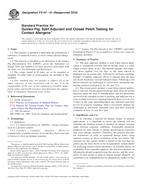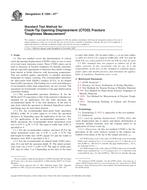1.1 This guide covers suggested components of the documentation of a ground-water modeling code. Documentation of a ground-water modeling code consists of textual and graphical information recorded during its design, development, and maintenance regarding its capabilities, development history, theoretical foundation, operation, and verification. It is the principal instrument for those involved in its development and use, such as code development and maintenance staff, network managers, code users, and project managers, to communicate regarding all aspects of the software.
1.2 This guide presents the major steps in preparing the documentation of a ground-water modeling code. It discusses the various documentation audiences and addresses the role of printed documentation versus documentation in electronic form.
1.3 This guide is one of a series of guides on ground-water modeling codes and their applications, such as Guides D5447, D5490, D5609, D5610, D5611, and D5718.
1.4 This guide is not intended to be all inclusive. If offers a series of options and considerations, but does not specify a course of action. Documenting certain codes may require supplemental information or replacement of documentation sections by more appropriate elements. This guide should not be used as a sole criterion or basis of comparison, and does not replace or relieve professional judgement in preparing or evaluating documentation of ground-water modeling software.
1.5 This standard does not purport to address all of the safety concerns, if any, associated with its use. It is the responsibility of the user of this standard to establish appropriate safety and health practices and determine the applicability of regulatory limitations prior to its use.
1.6 This guide offers an organized collection of information or a series of options and does not recommend a specific course of action. This guide cannot replace education or experience and should be used in conjunction with professional judgment. Not all aspects of this guide may be applicable in all circumstances. This guide is not intended to represent or replace the standard of care by which the adequacy of a given professional service must be judged, nor should this guide be applied without consideration of a project’s many unique aspects. The word “Standard“ in the title of this document means only that the document has been approved through the ASTM consensus process.
Product Details
- Published:
- 07/01/2010
- Number of Pages:
- 4
- File Size:
- 1 file , 80 KB


